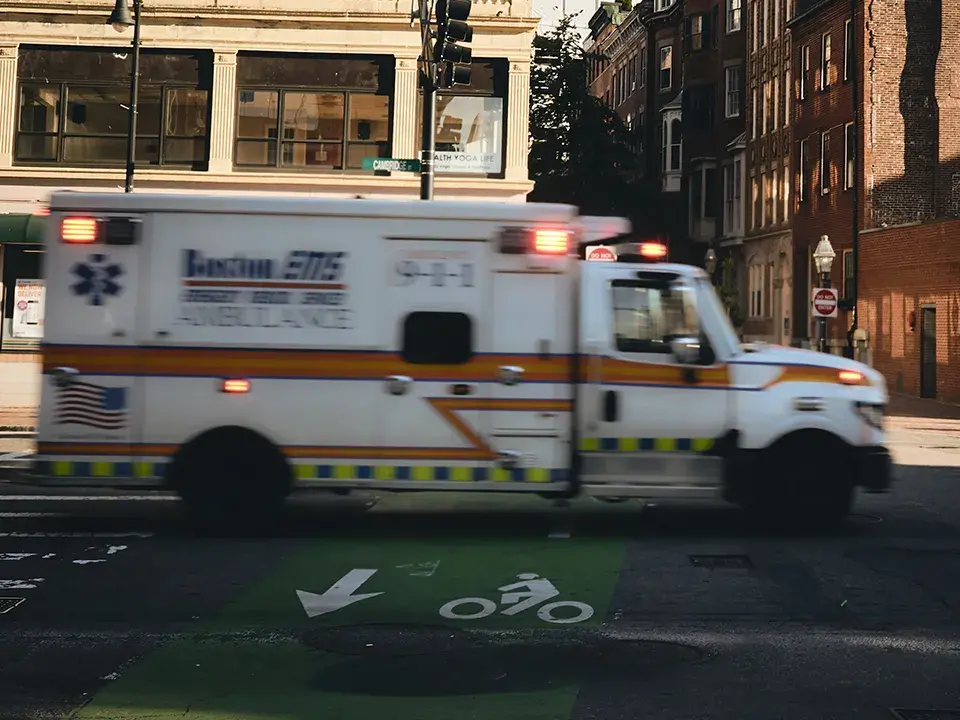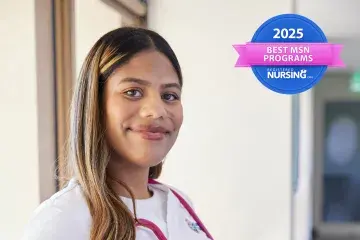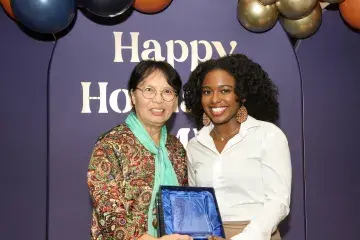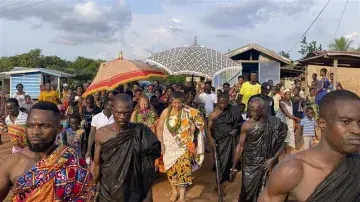Hotspotting: Treating Patients Who Are Hospital Super-Utilizers

Students who participate in the “hotspotting” initiative at Samuel Merritt University (SMU) say they are learning powerful lessons about health care by listening to the stories of patients’ lives and working alongside people from other health disciplines.
SMU was chosen by the Camden Coalition of Healthcare Providers in 2017 as the West Coast hub for training students in how to practice this new model of caring for patients with complex health and social needs.
Hotspotting makes strategic use of data to locate the most frequent users of emergency departments and then applies a personalized approach to better understand and address the medical, psychological, and social barriers preventing them from staying healthy.
SMU will wrap up its second year as the West Coast hotspotting hub on March 23 when program participants, their faculty advisors, and community practitioners gather on the Oakland campus to discuss what they learned over the past six months as they worked in teams to connect patients with complex-care needs to support services.
This year’s interprofessional program included students from SMU, California Northstate University, the University of Southern California (USC), and the University of Washington. The professions represented by the 26 participating students were nursing, occupational therapy, physical therapy, pharmacy, medicine, and social work.
It’s not just patients, it’s the systems we create
SMU Assistant Academic Vice President Michael Negrete, who leads the University’s interprofessional and hotspotting initiatives, said bureaucratic barriers at hospitals continue to frustrate efforts to link hotspotters with patients.
“They are a parallel to the roadblocks patients are experiencing,” said Negrete. “It gives students more compassion for what their patients go through in getting care.”
Two of the SMU hotspotting students who will attend the wrap-up event are Nicholas Abiuso, who is completing the Entry Level Master of Science in Nursing - Case Management program in April, and Emily Nusbaum, a third-year students in the Doctor of Occupational Therapy program. Here, they share their recent experiences:
Trauma-informed care
Abiuso said skills workshops on trauma-informed care and storytelling led by experts from around the country helped to inform his work with patients.
“It was moments like those where I realized I am very lucky to get a chance to be a part of this,” he said.
A hospital emergency department alerted Abiuso and his hotspotting partner, a family nurse practitioner student, to the two patients they met. The first was a Spanish-speaking immigrant with a chronic disease who made repeated visits to the hospital because he didn’t have his own doctor.
“The reality is he’s not the only one. There are a lot of people with similar situations,” he said. “It’s like going in blind to a system that is already extremely complex.”
Abiuso’s other patient was a homeless man living on the streets of Sacramento and struggling with drug and alcohol addiction. Abiuso said he listened to the man’s story and also shared personal information about his own background to build trust.
“Even though we can’t provide medical care, we were doing our best to help him out with the slow process of getting connected to social services. I thought it was very important to make sure when we were present with him that there were words of encouragement, that we were listening actively and attentively, to make sure that he knew someone really cares, which of course we do. I was getting the sense that he may have been abandoned most of his life and let down,” said Abiuso.
“Things get complicated so quickly. You can only prepare so much these real-world experiences until you’re sitting in front of someone … the story definitely gets to you. I did my best to maintain my composure and use it to the best of my ability to understand what this gentleman is going through.”
Though the students were able to refer the man to some community resources right away, there were obstacles to maintaining communication with him. His cell phone had been stolen and to stay in touch with him they relied on email that the man could only access through computers at the public library.
Abiuso last met with the man at a park to get a sense of his mental well-being and to talk about his future needs. Part of the plan the students made for him was scheduling his first appointment with a primary care physician in many years.
“He was very appreciative, recognizing that we were doing something on his behalf. Because at this point in time, it’s almost as if he has absolutely nobody so he was surprised we were actually following through on what we said,” Abiuso said.
“A little bit of doubt”
Nusbaum’s hotspotting team started out with 10 students, but slowly dwindled because of distance and their different schedules.
“That in itself has been a lesson in interprofessional collaboration and also taking on something in addition to what you’re doing at school, so I think I learned a lot in that. It becomes your own initiative; you’re transitioning out of that student mindset of ‘I’m doing this for a grade and because someone’s telling me to’ to really taking your own accountability for your learning,” she said.
Another challenge faced by Nusbaum was a lengthy delay in gaining proper credentials from Sutter Health. As a result, she was only able to meet one patient in Oakland for about 20 minutes and attend her doctor’s appointment alongside a USC social work student. Nonetheless, Nusbaum said she found it a powerful experience.
“I was having a little bit of doubt coming on so late to the team and wanting to be cautious about how much I was asking of the client to give to me so it wasn’t selfish gain for me as a student and not wanting to overpromise,” she said.
Nusbaum said she discussed her concerns during a case conference and received good advice from SMU Professor Amin Azzam, MD.
“Dr. Azzam talked about how just even positive interaction with someone might be the spark or the seed and it still can do good, so to not hold back if you have something to offer. Even just human kindness can be something that’s helpful. I’m going to take that into my practice in the future to not be too cautious and to just believe in the power of positive human interaction,” said Nusbaum.
Abiuso said hotspotting has taught him lessons that will help him in the work he hopes to do in the future for patients with complex-care needs, particularly the homeless.
“I think as students we are very eager to get them connected and get them the help that they need, but they have to meet us somewhere and we have to respect their pace and their autonomy,” he said. “It’s always the patient’s choice and they are the ones that are driving the plan forward.”
Putting interprofessional care into practice
Despite logistical challenges, both Nusbaum and Abiuso say the hotspotting program has been a valuable part of their health care education.
Nusbaum said she has participated in an interprofessional course and simulation, and believes the hotspotting program should be incorporated into the SMU curriculum — perhaps even required.
“It definitely aligns with Samuel Merritt’s values and I think it should go on and be easier to access for students who want to join in,” she said.
Abiuso, who heard about the hotspotting initiative long before he enrolled in his graduate nursing program, said he was attracted to working on a team of professionals from difficult disciplines and different schools. He said teaming up with social workers would have enriched his hotspotting experience.
“We want to take on these types of responsibilities. We want to be in real-life scenarios. We have this wonderful education and opportunity to explore different theories but putting into practice means so much more. So getting a chance to sit down with patients and listen to their stories has been a great educational lesson,” Abiuso said.


